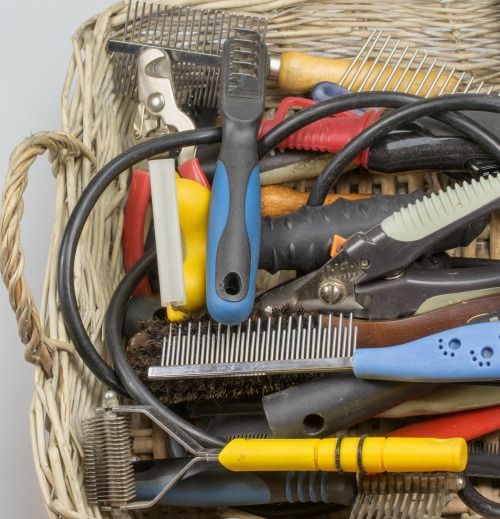Nobody expects you to expertly clip a nervous dog’s nails or give a Pomeranian the perfect “lion cut” right out of the gate. Training as a dog groomer is one of the best things you can do to get into the industry. If you’re already on your way, congratulations! But just because you have training, doesn’t mean you won’t make any mistakes. We are human, after all!
Making mistakes can seem like a big deal at the beginning, but you’ll soon learn that it’s all a part of the learning experience. As long as you recognize what went wrong and learn from the experience, you’ll go far in the industry.
If you want to stay on your toes and avoid some silly mistakes, check out these common mistakes that many new dog groomers make in their first few months in the business!
Biting off more than you can chew

There are two different ways this can happen.
The first is when you take on a huge workload that you don’t have the time or resources to handle. If you’re just starting out, you may be tempted to take on as many appointments as you can. But are you really able to work with 8 different clients a day—especially when you’re just starting out?
The second is when you take on ambitious projects that you haven’t built up the skill level to execute. If you take on jobs that are outside your scope before you’re ready, you might produce poor quality work. You may, in turn, receive bad reviews and a bad reputation with potential clients and other professionals in your area.
It’s good to be eager and willing to take on work, but taking on more than you can handle can have disastrous consequences.
The best thing to do is to take a deep breath and step back. Schedule your time and ask yourself if you have enough time and energy throughout the day to take on a heavy workload. If you really want to work with a particular client, figure out how the two of you can accommodate each other’s needs. Stick to jobs that are at your experience level or just slightly more challenging to improve your skills instead of overwhelming yourself.
Not laying out all the facts
Owners can be overprotective about their pets. It may not be the best idea to surprise them with a wacky haircut for their dog.
Whenever you take on a client, you have a responsibility to both the dog and their owners. It’s super important to communicate effectively with the owners and mediate between what they want and what the dogs need.
If you are grooming the dog and you see that they require immediate attention with something that could affect their health or well being (a skin rash or fleas, for instance), then you have to make sure that these problems are addressed to the owner immediately.

Make sure that prior to grooming, you let the owner know what your standard practices are! If you discover fleas during a haircut and will need to give the animal a flea bath to be charged at the owner’s expense, make sure that the owners know that that is a possibility beforehand. Leaving the owners in the dark just to surprise them with an additional bill in the end is just plain bad for business.
Equipment troubles
All your supplies should be sanitized properly between animals. You don’t want to risk spreading parasites and diseases! But what if you don’t have enough time to clean your tools before tending to the next client? You should never reuse your supplies between different clients’ dogs! So what other options do you have?
Stocking up on multiples of the same tools can be a life saver. You won’t have to worry about hurriedly sanitizing your dog grooming equipment (and potentially not cleaning your tools thoroughly) between back-to-back appointments.
Another common mistake is not having the right equipment. Dog grooming is an expensive business, but it pays to invest. When it comes to dog grooming, there’s no one-size-fits-all. You’ll need a range of different tools – in different sizes, too—to fit the breeds, coat types, and needs of all your different clients. Different breeds have different grooming standards, so having a variety of different clipper blades, scissors, shears, and brushes for the most common dogs is necessary.

Forgetting to Learn
Dog groomers are always learning—even if they’re already in the professional work force. The grooming industry is constantly evolving, with new products, techniques, and trends emerging all the time. If you assume that being an expert means that you’re done learning, your skills won’t develop at the same pace as your creativity. Pick up new tricks and techniques from other artists, workshops, conferences, videos, and books.

Promoting Yourself Poorly
Social networking can be extremely useful for dog groomers. Online platforms give you a wider reach than more traditional advertising. They let you display your work to people who might not see it elsewhere.
Remember, however, that it is possible to discourage potential clients online. If you flood their newsfeed, followers might become annoyed and think you’re just a hobbyist rather than a professional with a real world career. Promotion and advertising require careful balance.

What it all Means
Mistakes happen in any business, and you’ll make your fair share of them. But some mistakes are much more serious than others and can easily be avoided. When you’re a new dog groomer, a serious mistake can have lasting repercussions to your reputation and your career! Don’t take that chance. Learn from other peoples’ mistakes, as well as your own.
Have you made any of these rookie dog groomer mistakes? Let us know in a comment!



